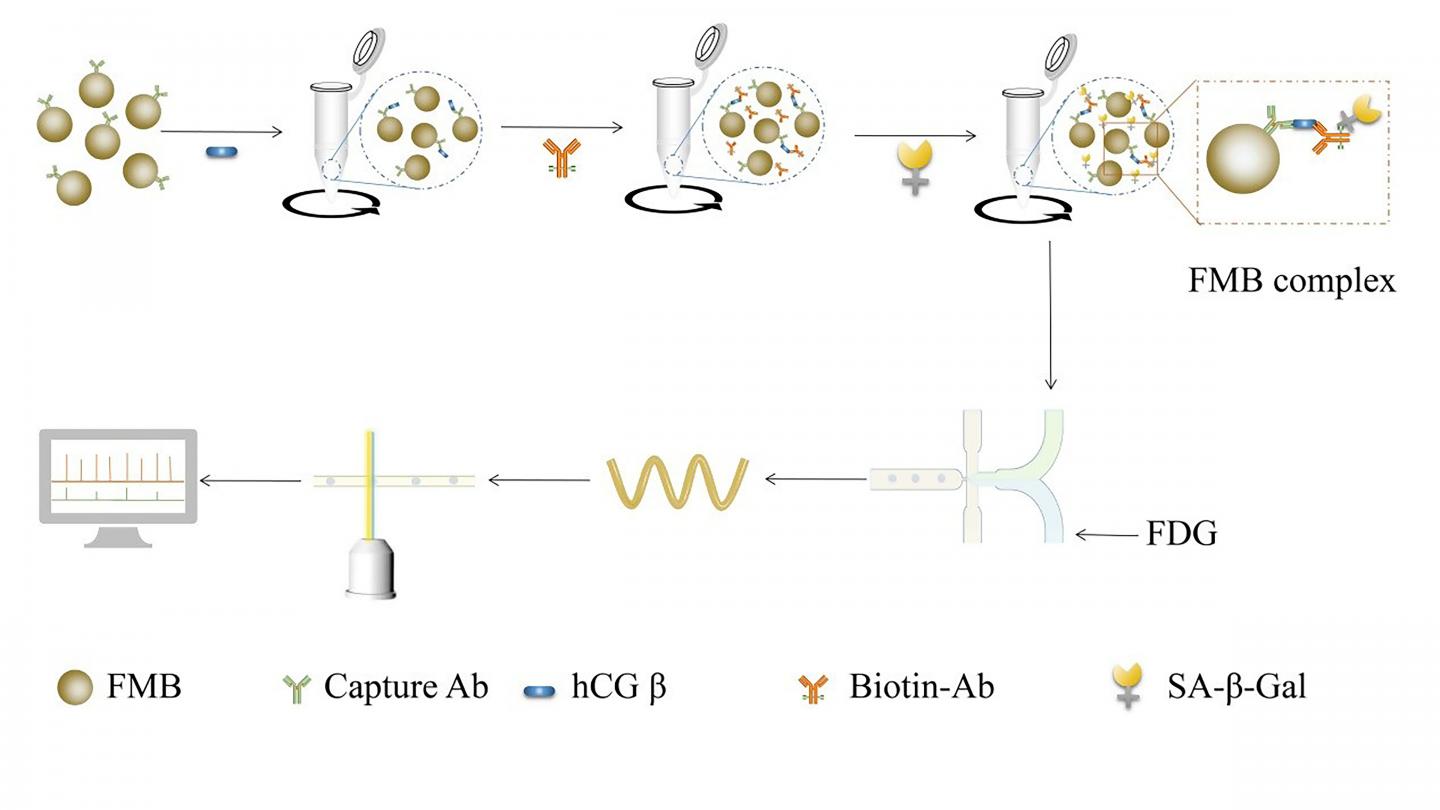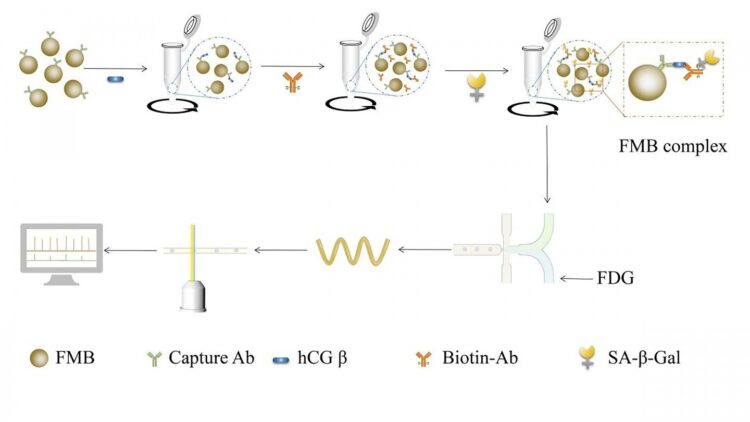Evaluating embryos by detecting secreted proteins using microfluidic droplets and multicolor fluorescence

Credit: Zeng Yong
WASHINGTON, April 7, 2020 — Infertility is estimated to affect 9% of reproductive-aged couples globally, and many couples consequently turn to assisted reproductive technology (ART). Selecting embryos with maximum development potential plays a pivotal role in obtaining the highest rate of success in ART treatment, which ultimately determines whether a couple gets pregnant.
The conventional way to select embryos is based mainly on a morphological score, a score based on the form of the embryo. This method, however, is subjective, and there is inherent variability in how embryologists score embryos’ morphology.
In comparison, researchers have found it more objective to evaluate the quality of an embryo by detecting the content of proteins secreted by the embryo. In a paper for Biomicrofluidics, from AIP Publishing, a method to detect trace proteins secreted by embryos using microfluidic droplets and multicolor fluorescence holds promise to select embryos for ART. The researchers analyzed spent embryo culture media from 30 patients in Shenzhen, China, collected between May to July 2019.
Extensive research in ART in secretomics, the analysis of the secretome, or the secreted proteins of a cell, tissue or organism, allows for the detection of these trace proteins. However, researchers are faced with a challenge because of the very small quantities of these proteins and the limits of detection tools.
“The proposed method aims to predict the developmental potential of the embryo based on the secretomics. We only need a small drop of medium to achieve this,” said Yong Zeng, chief scientist of the Fertility Center at Shenzhen Zhongshan Urology Hospital in Shenzhen, China.
The team used microfluidic chips, which are tiny devices that enable a small amount of liquid to be processed or visualized. Zeng and his team were able to ensure the accuracy of their results by using a multi fluorescence detector (MFD).
Fluorescent magnetic beads and beta-glucanase enzyme-induced fluorescence products have different excitation and emission wavelengths and can be detected by MFD. The team was consequently able to eliminate the false positive signals generated by free beta-glucanase.
Using this ultrasensitive detection method, the researchers found that human corionic gonadotropin secreted by top-quality blastocysts was significantly higher than that of non-top-quality blastocysts and the embryos which did not develop into blastocysts. Human corionic gonadotropin is a protein secreted by the placenta and also secreted by embryo cultured in vitro.
“In the future, we will test other different kinds of proteins secreted by the embryo and analyze the relationship between those proteins and embryo quality,” said Zeng.
Since various embryo-secreted proteins often appear in very small amounts, they will also work to develop increasingly sensitive and multifactor protein detection systems.
###
The article, “A method for the detection of hCGβ in spent embryo culture medium based on multicolor fluorescence detection from microfluidic droplets,” is authored by PeiLin Chen, Qing Sun, Feng Xiong, HuiXian Zhong, ZhiHong Yao and Yong Zeng. The article appears in Biomicrofluidics April 7, 2020 (DOI: 10.1063/1.5141490) and can be accessed at https:/
ABOUT THE JOURNAL
Biomicrofluidics rapidly disseminates research in fundamental physicochemical mechanisms associated with microfluidic and nanofluidic phenomena. The journal also publishes research in unique microfluidic and nanofluidic techniques for diagnostic, medical, biological, pharmaceutical, environmental, and chemical applications. See https:/
Media Contact
Larry Frum
[email protected]
Related Journal Article
http://dx.





